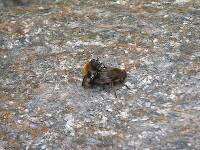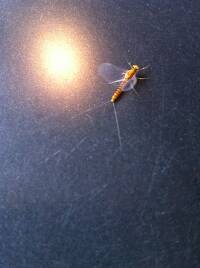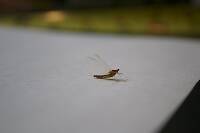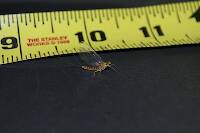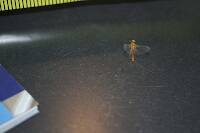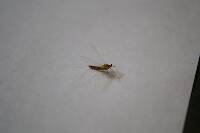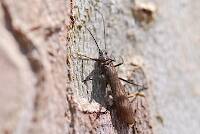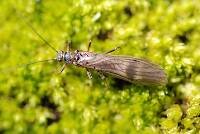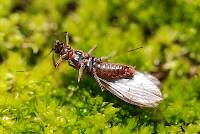
Salmonflies
Pteronarcys californica
The giant Salmonflies of the Western mountains are legendary for their proclivity to elicit consistent dry-fly action and ferocious strikes.
Featured on the forum

This specimen resembled several others of around the same size and perhaps the same species, which were pretty common in my February sample from the upper Yakima. Unfortunately, I misplaced the specimen before I could get it under a microscope for a definitive ID.

Troutnut is a project started in 2003 by salmonid ecologist Jason "Troutnut" Neuswanger to help anglers and
fly tyers unabashedly embrace the entomological side of the sport. Learn more about Troutnut or
support the project for an enhanced experience here.
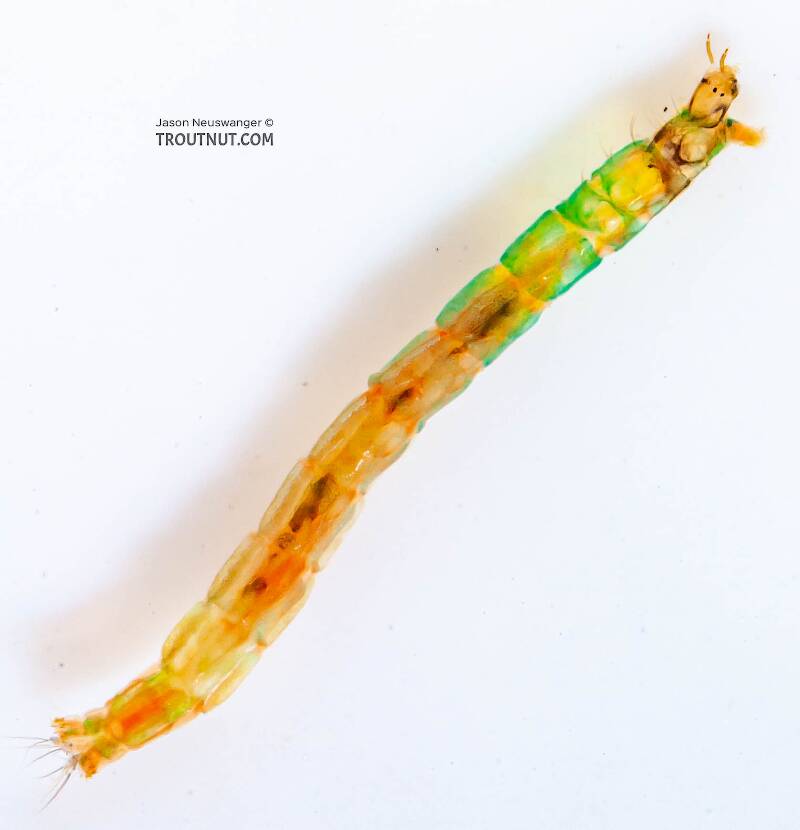
This peculiar midge lived in a case tightly fixed to a rock, with several others of its kind. The case seems to be made of tiny grains of sand. I'm not sure what the function is for the little lines sticking out the front, because they aren't legs.
Taxon on Apr 22, 2007April 22nd, 2007, 8:03 pm EDT
I believe this is Rheotanytarsus
David-
I know very little about Chironomids, but am interested in learning. So, I went to Merritt & Cummins to see if I could follow how you made this identification. The last larval couplet for Rheotanytarsus reads as follows:
15’. Distal portion of 2nd antennal segment only moderately expanded (Fig. 26.121);
………mentum not strongly arched (Fig. 26.102) …………… Rheotanytarsus Bause
Fig. 26.121 appears below, and is titled Second antennal segment of Rheotanytarsus sp.

Jason’s picture_2885_full cropped to show only the head and darkened a bit appears below:
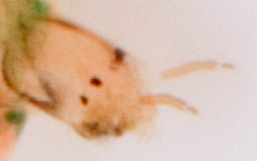
Unless I am seriously missing something, which certainly wouldn’t be unprecedented, Rheotanytarsus antennae appear to be branched following the 2nd segment, and I don’t see that character in Jason’s picture. Please advise.
Taxon on Apr 23, 2007April 23rd, 2007, 9:38 am EDT
Really great information, David. There are some of us on here who really appreciate the details, so please don't be reluctant to volunteer them.
Troutnut on Apr 23, 2007April 23rd, 2007, 2:08 pm EDT
Ditto what Taxon said.
Jason Neuswanger, Ph.D.
Troutnut and salmonid ecologist
Troutnut and salmonid ecologist
Quick Reply
Related Discussions
Topic
Replies
Last Reply
14
Jul 24, 2014
by Crepuscular
by Crepuscular
25
Aug 18, 2011
by Sayfu
by Sayfu
1
Oct 28, 2008
by GONZO
by GONZO




